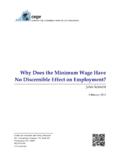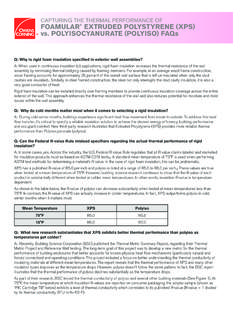Transcription of BIS Working Papers
1 BIS Working Papers No 655. The FinTech Opportunity by Thomas Philippon Monetary and Economic Department August 2017. JEL classification: E2, G2, N2. Keywords: FinTech, financial innovation, regulation, rents BIS Working Papers are written by members of the Monetary and Economic Department of the Bank for International Settlements, and from time to time by other economists, and are published by the Bank. The Papers are on subjects of topical interest and are technical in character. The views expressed in them are those of their authors and not necessarily the views of the BIS.
2 This publication is available on the BIS website ( ). Bank for International Settlements 2017. All rights reserved. Brief excerpts may be reproduced or translated provided the source is stated. ISSN 1020-0959 (print). ISSN 1682-7678 (online). Foreword The 15th BIS Annual Conference took place in Lucerne, Switzerland, on 24 June 2016. The event brought together a distinguished group of central bank Governors, leading academics and former public officials to exchange views on the topic Long-term issues for central banks . The Papers presented at the conference and the discussants' comments are released as BIS Working Papers 653 to 656.
3 BIS Papers no 92 contains the opening address by Jaime Caruana (General Manager, BIS) and remarks by Kevin Warsh (Hoover Institution and Stanford Graduate School of Business). WP655 The FinTech Opportunity iii The FinTech Opportunity Thomas Philippon . July 2016. Abstract This paper assesses the potential impact of FinTech on the finance industry. I document first that financial services remain surprisingly expensive, which explains the emergence of new entrants. I then argue that the current regulatory approach is subject to significant political economy and coordination costs, and therefore unlikely to deliver much structural change.
4 FinTech can improve both financial stability and access to services, but this requires significant changes in the focus of regulations. JEL: E2, G2, N2. Stern School of Business, New York University; NBER and CEPR. This paper was prepared for the 2016 Annual Conference of the BIS. I am grateful to my discussants Martin Hellwig and Ross Levine, and to Kim Schoenholtz, Anat Admati, Stephen Cecchetti, Fran ois V ron, Nathalie Beaudemoulin, Stefan Ingves, Raghu Rajan, Viral Acharya, Philipp Schnabl, and Bruce Tuckman for stimulating discussions and/or comments on early drafts.
5 1. This paper studies the FinTech movement in the context of the long run evolution of the finance industry and its regulations. The 2007/2009 financial crisis has triggered new regulatory initiatives and has accelerated existing ones. I argue that the current framework has been useful but that it has run its course and is unlikely to deliver significant welfare gains in the future. As a consequence, it is worthwhile to consider a new approach, for which I. propose some guiding principles. FinTech covers digital innovations and technology-enabled business model innovations in the financial sector.
6 Such innovations can disrupt existing industry structures and blur industry boundaries, facilitate strategic disin- termediation, revolutionize how existing firms create and deliver products and services, provide new gateways for entrepreneurship, democratize access to financial services, but also create significant privacy, regulatory and law- enforcement challenges. Examples of innovations that are central to FinTech today include cryptocurrencies and the blockchain, new digital advisory and trading systems, artificial intelligence and machine learning, peer-to-peer lending, equity crowdfunding and mobile payment systems.
7 The starting point of my analysis, developed in Section 1, is that the current financial system is rather ine cient. To show this, I update the work of Philippon (2015) with post-crisis data. I find that the unit cost of financial intermediation has declined only marginally since the crisis. The evidence outside the is remarkably similar, as shown in Bazot (2013). Recent research also suggests that many advanced economies have reached a point where more finance is not Significant welfare gains from improvement in financial services are technologically feasible but unlikely to happen without entry of new firms.
8 Section 2 then reviews recent regulatory e orts and challenges. The financial regulations enacted after 2009 are not as far reaching as the ones implemented after the Great Depression, but the evidence suggests that these e orts have made the financial sector A defining feature of the current approach, however, is that it focuses almost exclusively on incumbents. This approach is unlikely to deliver much further improvement because of ubiquitous ratchet e ects in leverage, size and interconnectedness, preferential tax treatments, and oligopoly rents. These distortions are embedded in the current financial system to such an extent that the political and coordination costs of removing them have become prohibitive.
9 These first two points suggest that it is useful to consider an alternative approach to financial regulation, based on the idea that encouraging entry and shaping the development of new systems might be the best way to solve the remaining challenges in financial regulation. With respect to incumbents, this alternative approach would be a form of containment: its goal would be to consolidate existing e orts and prevent future regulatory arbitrage, but not to impose top-down structural changes. The new approach would focus on entrants and take advantage of the ongoing development of FinTech firms.
10 The main idea is to achieve bottom-up structural change by encouraging, for instance, firms that provide transaction services without leverage, and trading systems that are cheap, transparent 1 See Favara (2009), Cecchetti and Kharroubi (2012), Shin (2012) among others. 2 For instance, capital requirements are significantly higher, but funding costs have not increased (Cecchetti, 2014). Of course, higher capital ratios could be desirable (Admati et al., 2013). 2. and open-access. I conclude by sketching out some guiding principles for this new approach. 1 Ine ciency of the Existing System The main finding in Philippon (2015) is that the unit cost of financial intermediation in the has remained around 2% for the past 130 years.














